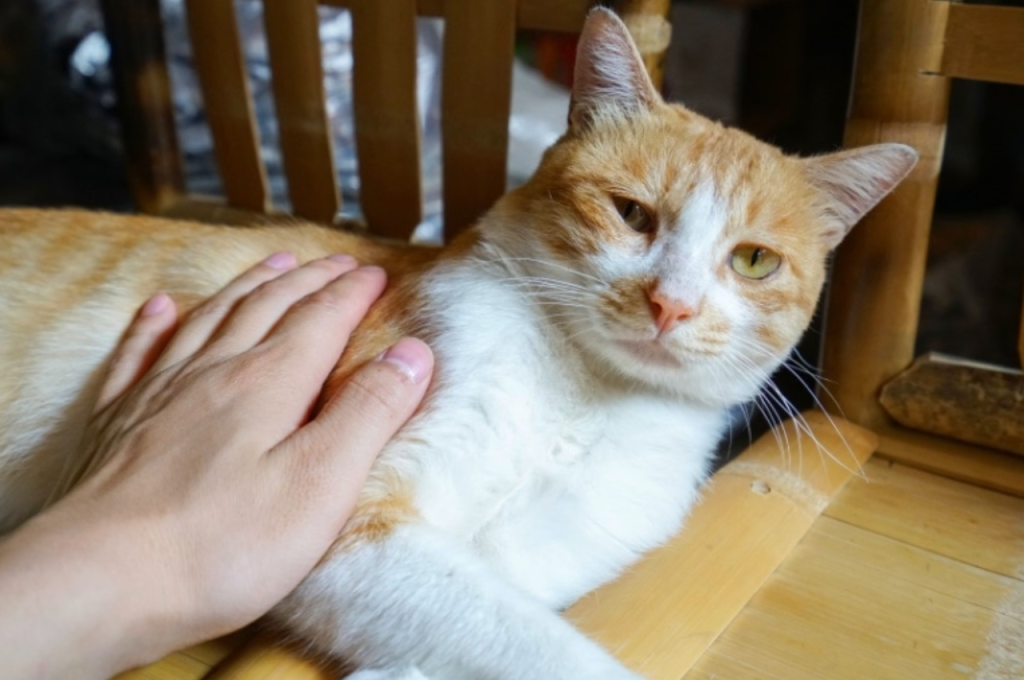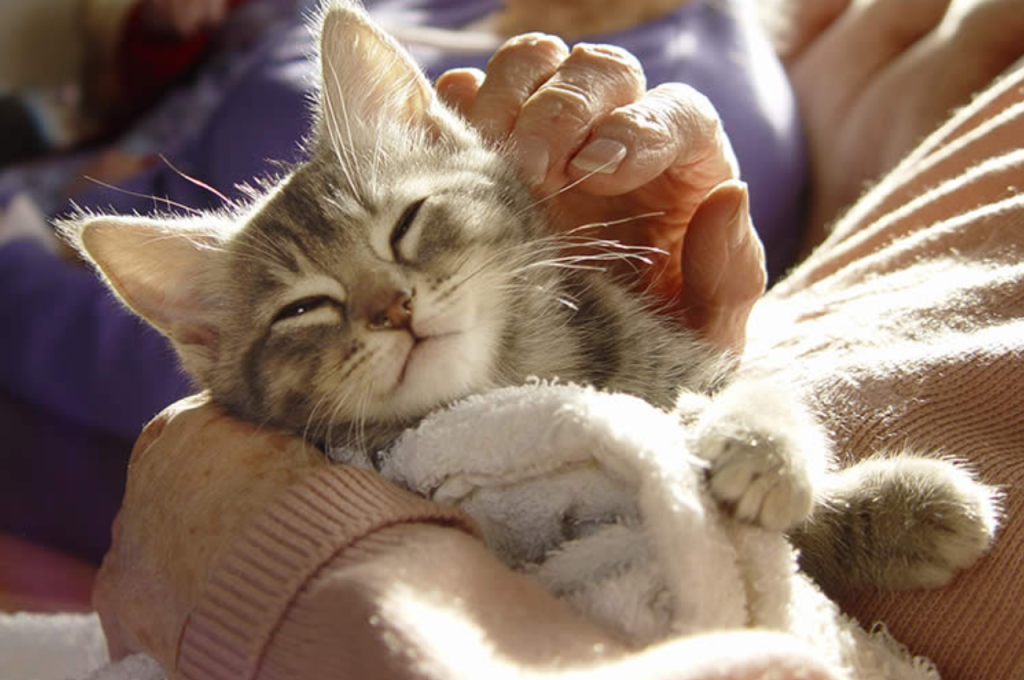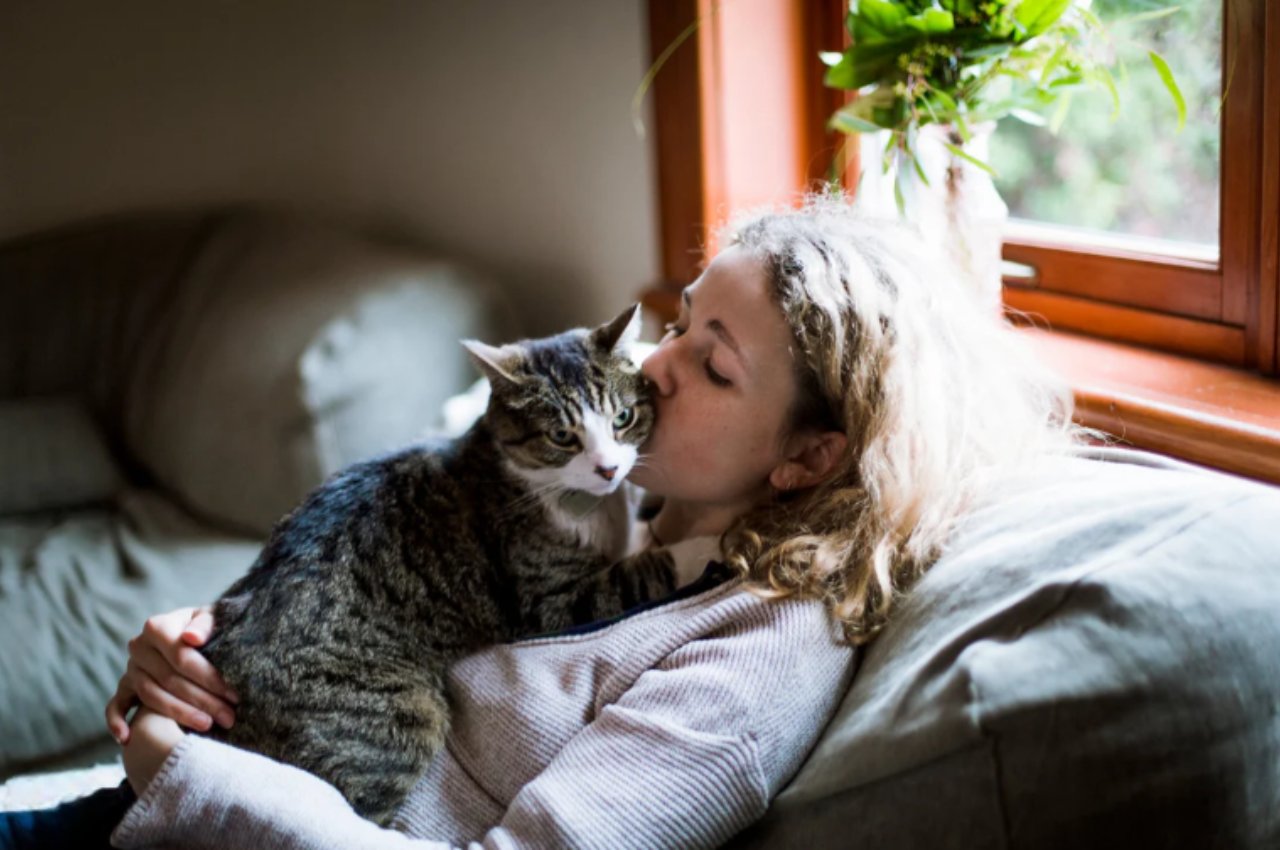Cats can sense and understand their owner’s emotions, including when they are sad. Cats are not only affectionate and playful but also possess an uncanny ability to understand and respond to their owners’ emotions.
When you’re feeling down, cats can often sense your sadness and try to comfort you in their unique ways. Whether it’s by purring, rubbing against you, or simply by offering their presence, cats provide a sense of solace and emotional support during tough times.
This innate ability to understand human emotions is one of the many reasons why cats have become such beloved companions and valued therapy animals throughout history. Furthermore, research suggests that cats are highly perceptive to subtle changes in facial expressions and body language, allowing them to gauge their owner’s emotional state accurately. We will explore the fascinating bond between cats and humans and delve deeper into how cats can sense and respond to our sadness.
The Nature of Cats
Cats, with their enigmatic nature and captivating charm, have long captivated the hearts and minds of humans. From their graceful movements to their independent spirit, these feline companions embody a unique blend of mystery and elegance that continues to fascinate us. Let’s embark on a journey to unravel the essence of cats and delve into what makes them truly special.

Social Behavior and Communication
Cats exhibit social behavior through their interactions with other cats and humans. They communicate through various vocalizations, body language, and scent markings. Cats use meows, purrs, hisses, and gestures to express their needs and emotions.
Emotional Intelligence
Cats show emotional intelligence by recognizing human emotions such as sadness. They may offer comfort by cuddling or purring when they sense their owner is sad. Cats are intuitive creatures and can pick up on subtle cues in their environment.
Cats and Empathy
Cats have a remarkable ability to sense and respond to their owners’ emotions. It’s a common belief that cats can tell when you’re sad and seem to offer comfort in these moments. This instinctual response and keen observational skills are some of the ways cats show empathy towards us.
Instinctual Responses
Cats possess an innate ability to detect emotional changes in their human companions. They are highly intuitive creatures who rely on their instincts to respond to various situations. When you’re feeling down or upset, your cat may pick up on subtle cues like body language or changes in your voice. They may approach you or snuggle up beside you, providing a calming presence that can alleviate your sorrow.
In addition to their perceptive nature, cats have evolved their response to human emotions over centuries of companionship. Through these instinctual responses, they can provide a sense of comfort and support during difficult times.
Observational Skills
Cats are known for their exceptional observational skills, allowing them to pick up on even the most subtle changes in their environment. They are constantly tuned in to their surroundings, including their human companions’ emotional states.
This means that when you’re sad, your cat may notice differences in your behavior, such as decreased activity, changes in speech patterns, or increased time spent in one place. They instinctively respond to these cues, understanding that something is amiss and recognizing the opportunity to offer solace.
Cats also have an incredible ability to interpret human body language, which further improves their observational skills. They are experts in reading facial expressions and body postures, enabling them to accurately assess your emotional state.
All of these factors contribute to cats’ ability to detect when you’re feeling sad. Whether it’s through their instinctual responses or observational skills, they have an uncanny knack for empathizing with their owners and providing them with the emotional support they need.
Signs of Empathy in Cats
Cats are often seen as independent and aloof creatures, but beneath their cool exterior lies a surprising capacity for empathy. While they may not express emotions in the same overt manner as dogs. Here are some common indicators of empathy in cats:
Body Language Cues
When your cat senses that you are sad, they might display signs of empathy through their body language. They may approach you and rub against you, as a way to offer comfort and support. Their purring and gentle head nudges can also indicate that they are trying to provide emotional support. Cats might also give prolonged eye contact as if trying to understand your emotions.
Behavioral Changes
Cats might exhibit behavioral changes when they sense that you are sad. They may become more affectionate, seeking out your company more often than usual. Alternatively, they may withdraw, seeking solitude to give you space while still being nearby. Changes in their eating habits or grooming routines are also common signs of empathetic response.
Scientific Studies
Cats are often regarded as mysterious and enigmatic creatures, leaving many to wonder: Can cats understand human emotions? As it turns out, scientific studies have delved into this intriguing question, shedding light on the complex relationship between felines and human emotions.

Research Findings
Research in the field of anthrozoology, the study of human-animal interactions, has revealed fascinating insights into the emotional intelligence of cats. Studies have shown that cats possess the ability to detect changes in their owner’s behavior and emotional state. They seem to exhibit empathy, showing concern and even offering comfort when their owners are experiencing distress.
Expert Opinions
Renowned animal behavior experts and researchers such as Dr. John Bradshaw emphasize the significance of communication between cats and their human companions. According to their expertise, cats are adept at picking up on subtle cues such as body language and vocal expressions, allowing them to discern when their owners are feeling sad or upset.
Cats vs. Dogs
Cats and dogs are two of the most popular pets worldwide, each with its unique characteristics and qualities. While both offer companionship and affection to their owners, there are distinct differences between the two species that may influence a person’s preference. Here’s a closer look at some of the key differences between cats and dogs:
Differing Approaches to Empathy
Cats and dogs have distinct ways of showing empathy towards humans.
- Cats tend to offer quiet support by staying close to their sad owners.
- Dogs often display more overt signs of empathy such as licking or nuzzling behavior.
Comparing Reactions to Human Emotions
When it comes to recognizing sadness in humans, cats and dogs exhibit contrasting responses.
- Cats may offer comfort by purring, sitting on laps, or gently touching their owners.
- Dogs, on the other hand, may become more energetic, seeking to cheer up their owners with playfulness.
Bonding with Your Cat
When it comes to forming a deep connection with your cat, it’s important to encourage empathy and mutual understanding. Cats have a reputation for being independent and aloof, but they are also highly sensitive and intuitive creatures. They are capable of picking up on your emotions, including when you’re feeling sad or upset. Understanding how this bond works can help you strengthen your connection with your furry friend.
Encouraging Empathy
Cats may not be able to speak our language, but they have other ways of communicating and showing empathy. One way to encourage empathy is through physical touch. Gently stroking your cat and providing them with comfort and affection can create a loving and supportive environment. Cats respond to touch, and they often return the favor by nuzzling against you or purring soothingly.
Additionally, cats are highly perceptive to your body language and tone of voice. They can sense when you’re feeling down, and they may try to provide comfort by staying close to you or curling up on your lap. By acknowledging and responding to their efforts, you validate their empathy and reinforce the bond between you.
Mutual Understanding
Creating mutual understanding between you and your cat involves active participation from both sides. Understanding your cat’s behavior and body language can help you decipher their needs and emotions. For instance, if your cat rubs against your legs or shows affectionate gestures, it’s their way of showing that they care about you and want to be close. Responding positively to these cues reinforces the bond and promotes a sense of security.
Furthermore, spending quality time with your cat can also deepen your bond. Engaging in playtime, providing them with a stimulating environment, and offering treats and rewards when they display positive behavior help in nurturing the bond. By showing your cat that you appreciate and understand them, you reinforce mutual trust and affection.
Remember, understand that bonding with your cat is a gradual process, and each cat is unique in their way. Patience and consistency are key when it comes to building a strong bond. By fostering empathy and mutual understanding, you can create a deep and meaningful connection with your feline companion.
Benefits of Feline Empathy
Cats have a unique ability to sense human emotions and provide support in times of distress. Their empathetic nature can have a positive impact on mental health and emotional well-being.
Mental Health Support
Cats provide a source of comfort and a soothing presence, which can alleviate feelings of loneliness and anxiety. Their empathetic response to human emotions can help reduce stress and promote a sense of calm.
Companionship in Emotional Times
During sad or difficult periods, cats offer unconditional companionship and can serve as a constant source of emotional support. Their presence can provide comfort and help ease feelings of isolation.
Practical Tips
When you’re feeling down, your cat’s behavior can give you comfort. By interpreting their cues and creating a supportive environment, you can enhance this connection.

Reading Your Cat’s Cues
- Observe their body language for signs of understanding your emotions.
- Look for purring, kneading, or gentle head-butting as comforting gestures.
- Pay attention to their eye contact and vocalizations when you’re upset.
- Respond with gentle petting and soothing words to acknowledge their support.
Creating A Supportive Environment
- Provide cozy spaces like blankets and cat beds for them to curl up beside you.
- Maintain a consistent routine to ease any stress or anxiety in your cat.
- Engage in interactive play sessions to strengthen your bond and boost your mood.
- Ensure a nutritious diet and regular vet check-ups for their overall well-being.
Frequently Asked Questions
Sure, here are some frequently asked questions (FAQs) about feline empathy:
1. Do cats have the ability to sense human emotions?
Yes, cats are adept at picking up on subtle changes in human behavior and emotions. They may show concern or provide comfort when they sense their owner is distressed. This ability to perceive emotions often leads to a strong bond between cats and their owners.
2. Can cats tell when you are sad?
Cats are intuitive creatures that can often pick up on their owner’s emotional state. They may display signs of empathy and offer comfort when they sense sadness or distress. Their actions, such as snuggling or purring, may be an attempt to provide solace during emotional times.
3. How do cats respond to sad or upset individuals?
When their owners are sad or upset, cats may exhibit increased affectionate behaviors, such as sitting close by, purring, or offering gentle nudges. Their intuition might lead them to provide a comforting presence and act as a source of emotional support during difficult moments.
Conclusion
Cats possess an innate ability to sense human emotions, including sadness. Their intuitive nature allows them to pick up on subtle cues such as body language and tone of voice. When you are feeling down, your feline friend may offer comfort and companionship.
Understanding this bond can deepen the connection between you and your furry companion, providing solace during difficult times. So, the next time you’re feeling blue, remember that your cat may be there to offer a paw of support.
